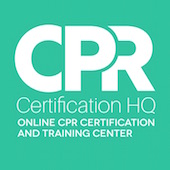Cardiopulmonary Resuscitation is an integral part of the First Aid treatment program. When administering CPR one must remember that it is being administered during an emergency situation where a person’s life is in grave danger. Hence, the training administered must be of the highest standard to ensure that no mistake occurs during the administration of the first aid. CPR is usually one of the first steps administered when a person is considered to be on the brink of death. In order to train an employee at a work place, the following criteria are absolutely essential.
- The training provider/trainer must have sufficient experience in the field of emergency medicine / first aid. For example, from organizations like St. John’s Cross, the Red Cross, AHA etc
- The training provider should follow a National Standard, i.e., should be able to teach the required CPR protocol in accordance to national standards, so that the treatment administered is of a singular format, irrespective of the location of where or which organization it is administered in.
- The training provider must also be able to provide customized training program based on the need of either the organization or community. In a work place, based on the type of work and work environment, training sessions need to be planned taking into consideration any and all risk posing factors such as the location, the physical equipment, work environmental conditions, ease of access to emergency services, availability of emergency resuscitation equipment etc. The training material should be based on a consensus of scientific evidence where and when available.
- The training provider must also have a program that includes follow-up training sessions. Studies show that work place training sessions usually have a 6-12 month retention period by the trainees.
- The training provider also needs to provide sufficient practical hands-on training sessions with resuscitation equipment and procedures in order to ensure that the trainees are familiar with the equipment in use, and the protocol to be used with. This can be achieved with the use of mannequins or partner practice.
- The trainees should also be provided accurate course related information for reference, to be used both during the training and after.
- The trainer should also be able to instill the emphasis of the need for self-confidence in the administrator of the CPR, and must have a series of confidence building exercises during the training course.
- The trainer should also be able to provide information on how to interact with local emergency services, so as to be able to provide accurate information to the paramedical staff as to the type of treatment that has been given to the patient/victim.
- The trainees also should be imparted with the knowledge of how to assess and clear the environment of potential hazards and hazardous material, how to establish a confined space for the administration of CPR, and the need for respiratory protection, and also the specialized training need to administer the CPR. Further, training on how to check for responsiveness, monitor vital signs, maintain a clear airway, clear airway obstruction, and how to use an AED (Automated External Defibrillator) should be provided.
